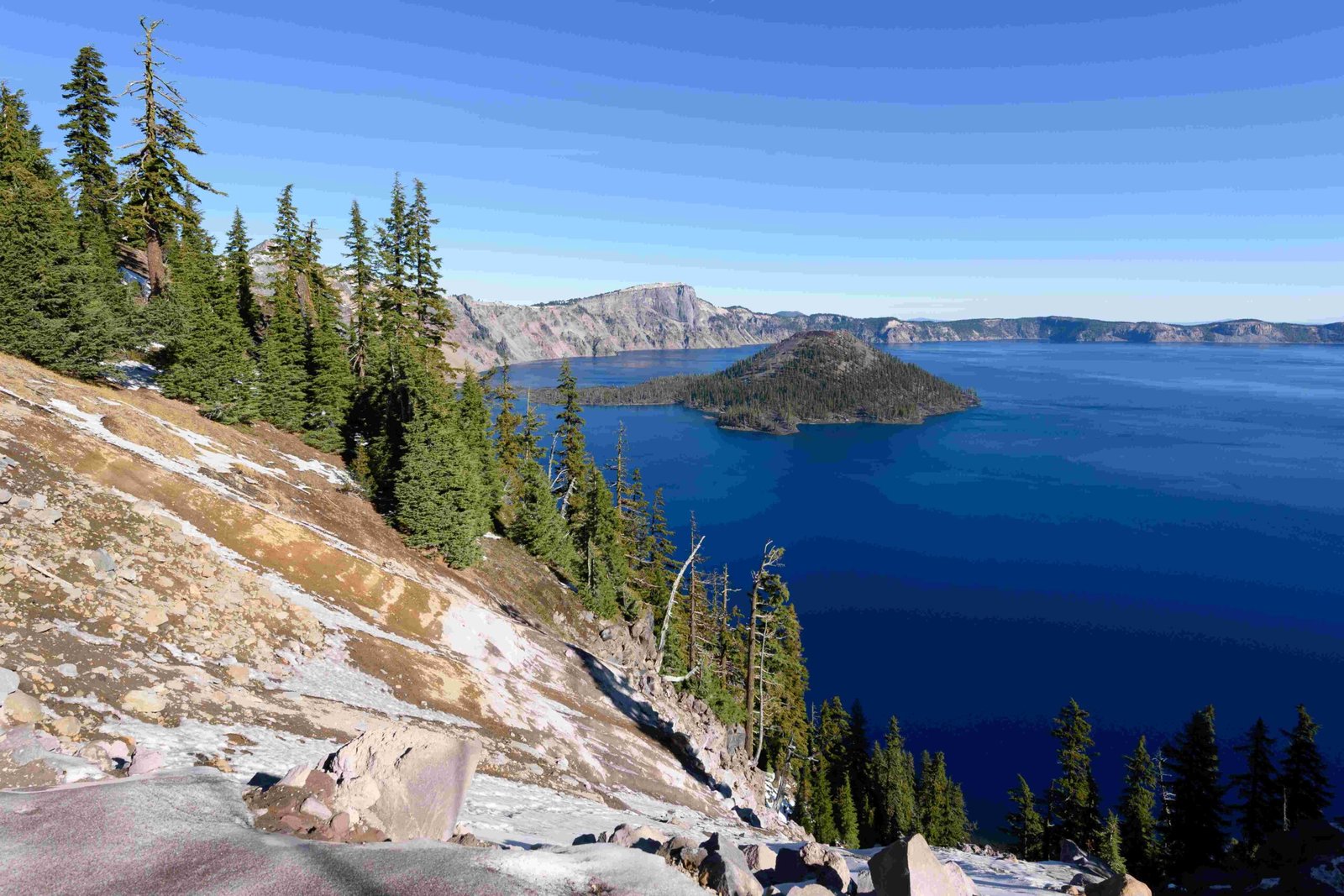Crater Lake, renowned for its exceptional depth and clarity, stands as a testament to nature’s pristine beauty. With a maximum depth of 1,949 feet (594 meters) and water clarity that allows visibility up to 134 feet (41 meters), it’s the deepest lake in the United States and one of the clearest in the world. This article delves into the fascinating aspects of Crater Lake’s depth and clarity, exploring measurement techniques, seasonal variations, and visitor experiences.
What Makes Crater Lake So Deep and Clear?

Crater Lake’s extraordinary depth and clarity are the result of its unique formation and isolated location. The lake was formed approximately 7,700 years ago when Mount Mazama, a volcano, collapsed after a massive eruption. The resulting caldera filled with snowmelt and rain over centuries, creating the deep, crystal-clear lake we see today.
Several factors contribute to its remarkable clarity:
- No incoming streams or rivers
- High elevation (6,178 feet above sea level)
- Low nutrient levels
- Cold water temperatures
These conditions limit algae growth and sediment input, maintaining the lake’s exceptional clarity.
How Is Crater Lake’s Depth Measured?

Measuring the depth of Crater Lake has been an ongoing process since its discovery. Here’s a brief timeline of depth measurements:
- 1886: First recorded measurement (1,996 feet)
- 1959: Detailed survey using echo sounding (1,932 feet)
- 2000: Multibeam survey (1,949 feet)
The most recent and accurate measurement comes from the 2000 multibeam survey, which used advanced sonar technology to map the lake’s bottom in detail.
What Techniques Are Used to Measure Water Clarity?
Water clarity in Crater Lake is primarily measured using a Secchi disk. This simple yet effective tool is a circular disk with alternating black and white quadrants. The measurement process involves:
- Lowering the disk into the water
- Recording the depth at which it disappears from view
- Raising the disk and noting when it reappears
- Averaging these two depths for the final clarity reading
Typical Secchi disk readings for Crater Lake range from 82 to 115 feet (25 to 35 meters), with record measurements reaching up to 134 feet (41 meters).
How Does Crater Lake’s Clarity Compare to Other Lakes?
To put Crater Lake’s clarity into perspective, let’s compare it with some other well-known clear lakes:
| Lake Name | Location | Maximum Clarity (feet) |
|---|---|---|
| Crater Lake | Oregon, USA | 134 |
| Lake Tahoe | California/Nevada, USA | 78 |
| Lake Baikal | Russia | 98 |
| Blue Lake | New Zealand | 262 |
While Blue Lake in New Zealand holds the record for the clearest freshwater lake, Crater Lake’s consistent high clarity over such a large body of water makes it truly exceptional.
Does Crater Lake’s Clarity Change Seasonally?
Crater Lake’s clarity does experience some seasonal variations, although these changes are relatively minor compared to most lakes. Factors influencing seasonal clarity include:
- Phytoplankton growth (typically peaks in late summer)
- Wind-borne pollen (spring and early summer)
- Winter storms (can temporarily reduce clarity)
Despite these fluctuations, the lake maintains its exceptional clarity year-round, with the clearest conditions often observed in late fall and early winter.
What Causes UV Transparency in Crater Lake?
One of the unique features of Crater Lake is its high UV transparency, especially in the top 50 feet (15 meters) of water. This characteristic is due to:
- Minimal dissolved organic matter
- Low algae concentrations
- Absence of pollutants
The high UV transparency contributes to the lake’s striking blue color and allows for unique ecological conditions in the upper water column.
How Can Visitors Experience Crater Lake’s Depth and Clarity?
Visitors to Crater Lake National Park have several options to appreciate the lake’s depth and clarity:
- Rim Drive: A 33-mile road circling the lake with numerous viewpoints
- Boat Tours: Guided tours on the lake itself (seasonal availability)
- Wizard Island: An opportunity to swim in the clear waters (when boat tours are operating)
- Cleetwood Cove Trail: The only trail that leads down to the lake’s shore
It’s important to note that access to some of these experiences may be limited by weather conditions, especially during winter months.
Are There Any Threats to Crater Lake’s Clarity?
While Crater Lake’s clarity has remained relatively stable over the years, potential threats include:
- Climate change (affecting water temperature and mixing patterns)
- Increased visitation (potential for pollution)
- Atmospheric deposition of pollutants
Park management and scientific monitoring programs are in place to track and mitigate these potential impacts.
What Research Is Being Conducted on Crater Lake’s Depth and Clarity?
Ongoing research at Crater Lake includes:
- Long-term monitoring of water quality parameters
- Studies on the lake’s unique ecosystem
- Climate change impact assessments
- Geological surveys of the lake bottom
These research efforts help park managers and scientists understand and protect the lake’s exceptional characteristics.
Crater Lake’s depth and clarity continue to captivate visitors and scientists alike. As we strive to understand and preserve this natural wonder, it serves as a benchmark for pristine water quality and a reminder of the importance of protecting our natural resources.
References:
1. https://www.opb.org/article/2022/09/17/crater-lake-oregon-clear-water-quality/
2. https://npshistory.com/publications/crla/limnological-studies-final.pdf
3. https://www.craterlakeinstitute.com/general-natural-history-articles/natural-history-wonders/crater-lake-clarity-it-doesnt-get-any-better-than-this/
